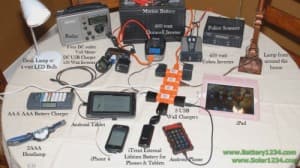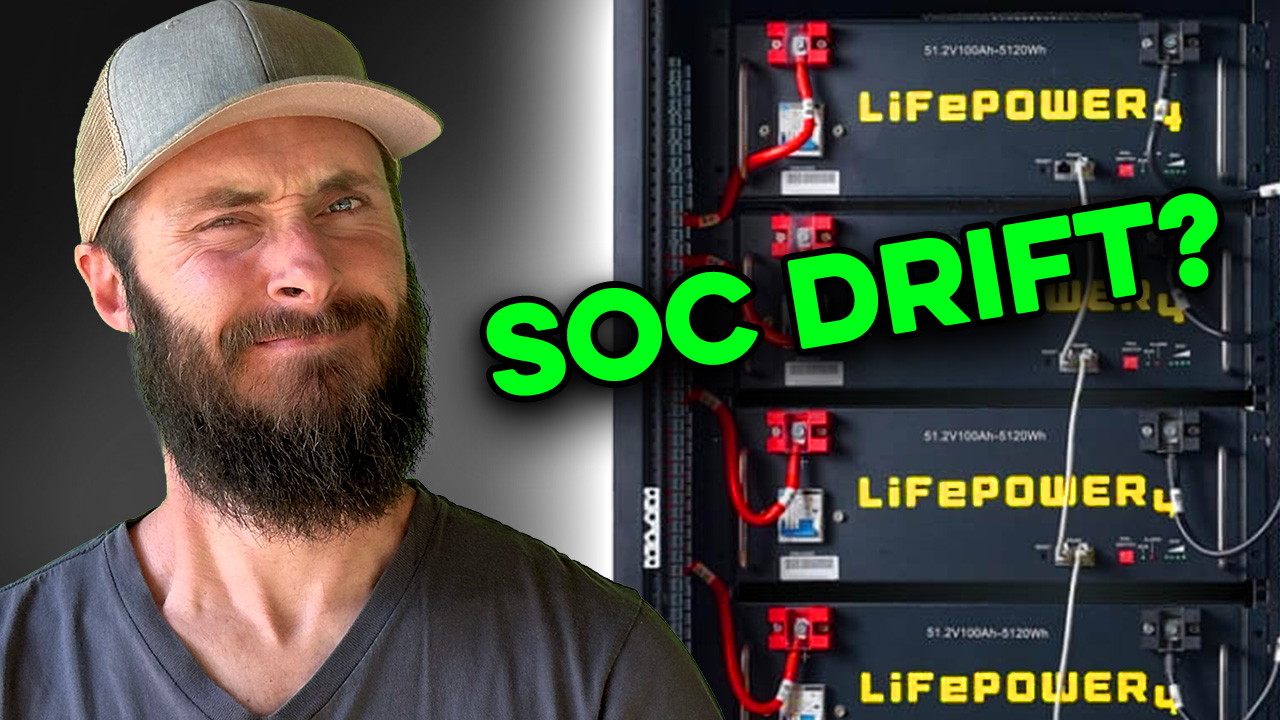Why I Built a DIY Home Battery Backup
How do you cope with the power going out?
While rearing two young boys with life-threatening allergies, the smallest things can become big problems. Let’s take losing power due to a summer thunderstorm for example.
Here’s a quick story about my oldest son (let’s call him Buddy) and how our DIY home battery backup system kept him safe. He’s two-years-old, super smart, and full of life. As alluded to earlier, he suffers from life-threatening food allergies. In addition to that, he breaks out in hives that spiral out of control quickly if he gets overheated.
Oddly enough, the hives show their ugly heads most often during Buddy’s energy extremes (running and sleeping). While not life-threatening in and of themselves, the hives can be quite an ordeal.
A few weeks ago we had a good ol’ East Texas summer thunderstorm roll in. If you’re like me, there’s not much better than sleeping during one of these gully washers. Just after putting the boys to bed, the lights began to flicker and moments later the house was dark.
After reaching into my pocket to illuminate the room with my iPhone LED, we gathered up some flashlights and called in the outage to the utility company. To our disappointment, they informed us we would be out of power until the next morning.
The AC had only been off 30 minutes or so, but when my wife (Jenn) went back to check on the boys, Buddy was already itching. We knew we were in for an eventful night.
Thankfully, I had listened to the interview with Steven Harris on The Survival Podcast that covered building your home & mobile battery bank about two years ago. This interview (part 2) along with part 1 of the series are among my favorite TSP episodes. I highly recommend them to anyone looking to build a DIY home battery backup system.
After listening to this interview, I started saving for a home battery bank. I purchased an Optima battery from a guy on Craigslist that ended up being old and crappy despite what he said when I purchased it. Luckily, I was able to get my money out of it and learned a valuable lesson.
I saved for a bit longer and put together a relatively inexpensive DIY home battery backup system.

My first home emergency backup power battery bank
Here’s a quick list of the main items in my DIY home battery backup system
- Cobra CPI 880 800 Watt 12 Volt DC to 120 Volt AC Power Inverter with 5 Volt USB output
- Schumacher XCS15 SpeedCharge Ship ‘n Shore Battery Charger
- Roadpro 12V Battery Clip-On and Cigarette Lighter Adapter
- Equus 3721 Battery and Charging System Monitor
- 2 x Energizer Deep Cycle Marine Battery – Group Size 24DC
Back to the story
I clamped my Cobra 800 Watt Power Inverter onto one of the batteries and plugged two fans into it. With a fan blowing directly on Buddy his skin remained cool to the touch all night long. As a parent, there’s no feeling in the world like knowing your children are taken care of.
[well type=””]
Tip for cooling from a DIY home battery backup: Cool the person, not the room!
[/well]
My wife, who didn’t fully understand why we needed the batteries two years ago. After this event, she asked me about getting more to extend the power capacity of our DIY home battery backup. How cool is that guys!
This simple DIY home battery backup setup costs around $300 total and that’s not the kind of cash I have laying around. Having said that, being able to keep my boys cool and our cell phones charged is worth every penny of it.
I would encourage you to build a simple battery bank for emergencies. If you’re the kind of person who needs to see how it’s done than I would highly recommend purchasing Steven Harris’s video series on building a home battery backup system.
He offers a complete step by step video on how to make your own emergency home battery backup system. It can be as small as one marine battery or it can be a whole bank of batteries. He shows you everything you would ever need to know.
The home battery bank video covers:
- Battery selection in detail
- How to set up your battery
- How to hook up the inverter properly
- Battery monitors and other fail-safe procedures
- Step by step on how to make a mobile battery bank for a pickup truck
- Explicit details on hooking up a solar panel to the battery bank
This DIY Video is incredibly detailed. No matter what your DIY skill level is you can watch these videos and then make your own DIY home battery backup system.
If this isn’t the right time for you to build a battery bank, I encourage you to at least get the Cobra 800 Watt Power Inverter. You can clamp this onto your car battery and run fans like I did or even power your refrigerator if need be. Just be sure to run your car while you have large items running on it.
If you have a battery bank I want to hear about it. Let me know in the comments section below.
Recent Posts
Spring 2025 Signature Solar Discount Code – 5% OFF EG4 6000XP Inverter (Limited Time!)
Looking for a Signature Solar discount code that works in 2025? Want to to save money on your next solar inverter purchase? You’re...
Parallel EG4 6000XP Install with EG4 WallMount Batteries
Welcome to the Ultimate DIY Off-Grid Solar Build For Beginners! If you’re planning an EG4 6000XP Install, this step-by-step guide will walk you...
How to Fix EG4 LifePower4 SOC Drift
Lithium SOC Drift Happens State of Charge (SOC) drift is a common issue you might face with your EG4 LifePower4 batteries. Over time,...




I’m IMPRESSED !!!! I learned a lot as well as lived out your great story telling. !!!!
I know whet I need for Christmas !
Author
Thanks for the encouraging comment! This would make a great Christmas gift for sure.
Nobody ever provides a way to connect a backup system to the home wiring. It isn’t really a home backup without it. I guess we’re supposed to run cords along the floor and swap plugs all the time to keep critical appliances running.
Author
A system like the one I’ve used would not be appropriate to wire into the home. It could be done, but it is only capable of running lights, fans, and other small appliances. Since that’s the case, you would either need to go turn everything in your house off or turn off all the breakers except the one that you are using. That’s why no one is showing how to do it. Another reason is that the equipment needed to make it safe and legal would cost more than the system itself. If you have a 10KW generator or larger, you could start looking into this option.